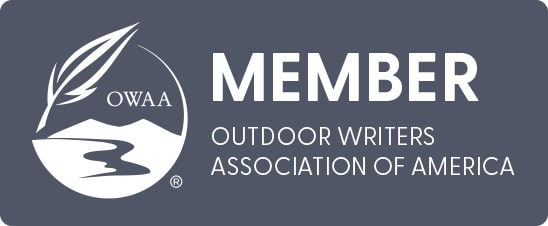
When the Trail Teaches What the Boardroom Ignores
The Alaska Range is unforgiving. On Denali’s flanks, temperatures drop, storms rage, and one wrong move can cost a life. Yet dog mushers navigate these extremes not with brute force, but through steady leadership, trust, and adaptability.
In my years conducting leadership expeditions, coaching executives, and facilitating organizational transformation, I have seen that lessons from the trail often carry more impact than lessons from business schools. The mushing world, with its constraints, demands, and team interdependence, offers vivid, applicable metaphors for leadership today.
What follows are leadership lessons drawn from Denali dog mushers, applying the wisdom of the trail to the challenges modern leaders face. These principles can help you lead with courage, connection, and clarity, whether you helm a startup, nonprofit, or corporate team.
1. Trust Is Non-Negotiable
In dog mushing, trust is not optional. A musher depends on a team of dogs whose lives depend on one another. The team must have absolute faith in the musher’s decisions, pacing, route, rest, and safety.
In business, trust functions similarly: your team must believe in your intentions, your consistency, and your competence. Without that, no strategy or incentive can fully compensate.
Modern Leadership Application:
Model consistency. Small actions, meeting start times, keeping commitments, transparent follow-through, build trust over time.
Be vulnerable thoughtfully. Admit when you don’t know. Leaders who own mistakes gain credibility.
Build relational margins. In high-trust environments, leaders invest in connection (listening, check-ins, presence) before crisis strikes.
In my coaching, I call this the “gangline” metaphor: your team is chained to you. If you snap trust, the whole sled train unravels.
2. Leadership Is Service, Not Spectacle
Mushers lead by doing. They break trail, set the pace, carry supplies, and when needed, follow the lead dog. They don’t stay in the cabin giving orders. Leadership is not a title, it’s action.
Executive leadership often becomes distant: too many meetings, too many layers, too much delegation. The Denali approach challenges this. Leaders who “mush” close with their teams build legitimacy, guide through example, and stay attuned to terrain changes.
Modern Leadership Application:
Lead from the front (and middle). Show up where work happens. Don’t just delegate, embed yourself in critical tasks occasionally.
Be willing to do the least glamorous work. If something needs done, step in. It demonstrates commitment and flattens hierarchy.
Rotate “lead dog” roles. Let emerging leaders take responsibility for specific initiatives, you offer guidance, not micromanagement.
In every dog team, the musher must remain connected, a constant presence, not an aloof commander.
3. Pace with Intention
A musher cannot sprint from start to summit. The terrain, temperament of the dogs, weather, and conditions demand a rhythm. Pushing too hard too early risks collapse; going too slow may waste critical time.
In organizations, executives often swing between extremes, overdrive or stagnation. Strategic pacing ensures sustainability, teams don’t burn out, and execution remains sharp.
Modern Leadership Application:
Set sustainable rhythms. Plan work cycles (e.g. sprints, quarters) that incorporate rest and reflection.
Know when to accelerate. Some moments demand bold leaps, a market shift, competitor weakness, client window.
Monitor cadence signals. Use feedback, pace indicators, and team energy as cues to adjust pace.
I teach leaders to read “team vitals,” morale, bandwidth, and stress, much like a musher reads weather and snowpack. Pace is strategy.
4. Adapt to the Conditions
Denali’s conditions shift with little warning. A trail that felt stable in the morning can turn treacherous in afternoon sun. Mushers continuously adapt: rerouting, adjusting sled weight, changing strategy mid-journey.
The business environment shifts just as fast: new technologies, client expectations, market disruptions. Leaders who cling doggedly to the original plan risk damage.
Modern Leadership Application:
Build adaptive cycles. Review strategy and goals each week or month, not just quarterly or annually.
Empower local decision-making. Let leaders on the ground respond to conditions rather than waiting for top-down permission.
Adopt “plan B thinking.” In your planning process, always surface pivot options, not single-point plans.
Your role is not to be rigid, it’s to create resilient systems that can bend, not break, under pressure.
5. Read Every Dog in the Team
A good musher knows the strengths, weaknesses, and quirks of every dog, who leads in cold, who tires first, who pulls harder uphill. Effective harnessing of those traits is essential to speed, balance, and safety.
In workplace leadership, your job is to read the people. One person excels in innovation but struggles with deadlines; another thrives under structure but resists ambiguity. One needs encouragement, another needs alignment.
Modern Leadership Application:
Use individual strengths. Match people to tasks aligned with their zone of genius.
Listen for signals. Be attuned to morale dips, silent frustration, or overcommitments.
Rotate roles cautiously. Give growth opportunities, but don’t throw people into roles that misalign with temperament or capacity without support.
Great leaders see their team as a system of interdependent parts, not interchangeable gears.
6. Embrace Redundancy and Safety
In extreme environments, mushers always plan for failure. Spare harnesses, extra food, redundant systems, these are not luxuries, but necessities. Safety margins are built in.
In business, we often run lean to maximize efficiency. But in volatile times, being too lean is dangerous. Margins for error, financial, human, relational, are your safety buffer.
Modern Leadership Application:
Build slack. Resource buffers (time, money, people) allow teams to absorb shocks.
Plan for contingencies. What happens if a key person is absent? Or a client backs out? Map fallback scenarios.
Prioritize resilience over optimization. Strive for “robust enough,” not “just-in-time perfect.”
Leaders who respect volatility build floors, not just ceilings.
7. Shared Ownership Over Command & Control
Sled dog teams operate as a system: each dog, each harness line, each runner, each sled share purpose. The musher’s role is orchestrator, not dictator of every movement.
In companies, too often leadership is top-down, with little ownership from team members. But when people feel they co-own outcomes, performance, engagement, and accountability all rise.
Modern Leadership Application:
Co-create direction. Invite teams into strategy, goal-setting, and problem-solving processes.
Delegate decision authority. For many initiatives, let people own solutions (within guardrails).
Celebrate collective wins. Recognize team efforts publicly; distribute credit widely.
When the mission feels shared, compliance transforms into ownership.
8. Learn from Failure…Fast
Mushers know that mistakes happen: wrong turns, gear failures, sleep miscalculations, storms. The response is not denial, it’s rapid learning and course correction.
In leadership, failure is often shamed, hidden, or ignored. But in complex systems, mistakes are inevitable. Treating them as learning accelerates growth.
Modern Leadership Application:
Normalize postmortems. After every project or campaign, ask: What worked? What didn’t? What will we change?
Share experiments publicly. When something fails, debrief openly, your team (and your culture) gains far more than losing face.
Adjust fast. Don’t cling to failing efforts, pivot or kill what isn’t working.
In the dynamic wild, adaption is the only path forward.
9. Honor the Team’s Well-being
Dogs are athletes, they need rest, food, and care. Mushers monitor vitals, rotate rests, observe signs of fatigue, and know when to pull back before collapse.
Business leaders too must care for psychological, emotional, and physical health of their teams. Burnout is the epidemic of modern work.
Modern Leadership Application:
Build recovery cycles. Alternate high intensity with deliberate rest phases.
Promote physical & mental health habits. Encourage breaks, time off, boundaries.
Watch for overextension. If your people are constantly “in the red,” adjust scope, support, or pacing.
High performance demands high renewal.
10. Legacy Is Built in the Snow, Not the Boardroom
Mushers don’t think about legacy in terms of spreadsheets. They think about their dog teams, the community, the trail they leave for future mushers. Legacy is built in action day by day.
Executives often focus on growth, valuations, exit strategies. But what endures is culture, values, and the impact left in people’s lives.
Modern Leadership Application:
Lead for the long game. Focus less on quarter-to-quarter wins and more on sustainable systems.
Mentor and develop. The mark of great leadership is developing new leaders to carry forward.
Embed values in operations. Have your culture live in decisions, not just in posters.
The trail you leave is your true legacy.
The Trail Is the Teacher
Denali, and all of Alaska’s wild terrain, its unpredictability, its demands, those are the best leadership textbooks. They teach us what can’t be taught in classrooms: trust under pressure, pacing with wisdom, leadership as service, and owning outcomes in ambiguity.
If you lead, or aspire to lead, bring the dog-mushing mindset into your work:
Lead with trust, not fear.
Pace with awareness, not haste.
Adapt with humility, not hubris.
Read and empower your team, not direct them.
Build resilience before efficiency.
Create shared ownership, not hollow enthusiasm.
Fail quickly, learn openly.
Protect your team’s well-being.
And build legacy through people, not profits alone.
In my leadership programs and coaching, I often ask: “If the sled dog trail is is your laboratory, what leadership experiments do you run today?” Because the strongest leaders aren’t those who never face storms, they’re those who learn to navigate them.










